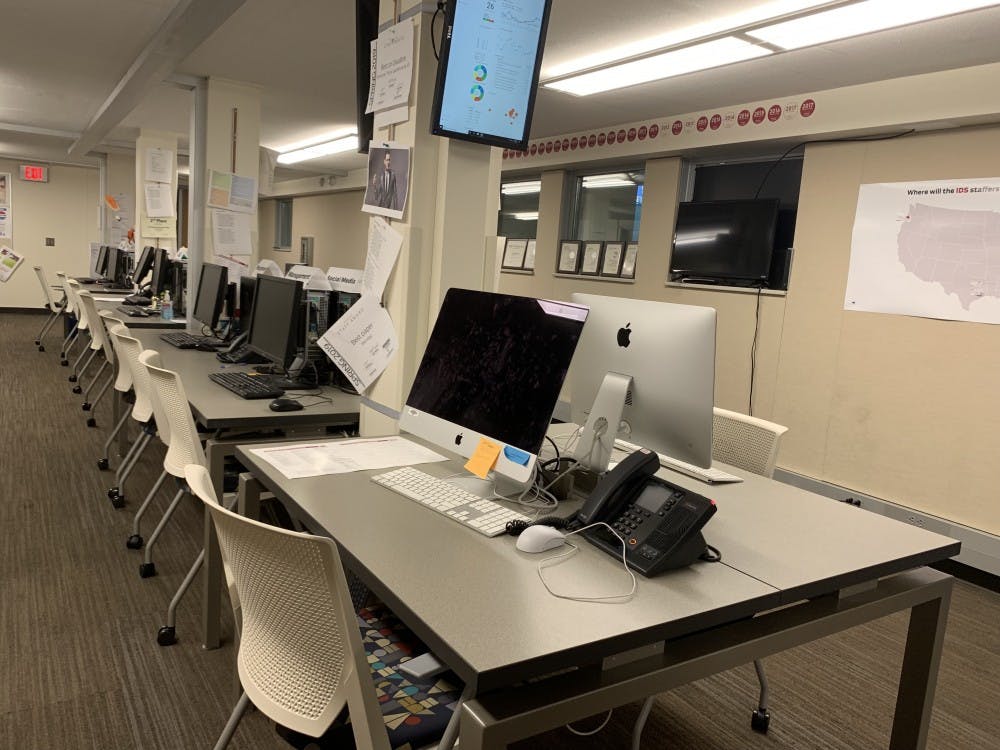Walking into my first day as an opinion columnist for the Indiana Daily Student, I was not quite sure what to expect. I had typical first day, “What-am-I-getting-myself-into” jitters accompanied with an assured excitement of what opening this new door would be like for me.
Walking into the newsroom, I noticed the newspapers full of dense, rich history with salient stories covering the walls. I noticed dates, deadlines and fellow journalists with a stark focus on the work at hand.
Walking into the newsroom, I also noticed I was the only black person, and specifically black woman, on the opinion desk.
That experience is not specific to me. Newsrooms all over the country lack diversity and something needs to be done to shift the demographics and consequently change the culture of newsrooms across America.
According to the 2018 Status of Women in the U.S. Media, women of color represent only 7.95% of U.S. print newspaper room staff, 6.2% of local radio staff and 12.6% of local TV news staff.
A 2017 study done by The American Society of News Editors found minority journalists made up 16.6 percent of workforce in U.S. newsrooms that responded to the Newsroom Employment Diversity Survey.
As technology advances and the world is virtually connected in seemingly impossible ways, the media holds a particularly special role in society and democracy. Diverse perspectives matter. When newsrooms are highly concentrated with one group of people, critical viewpoints are likely to be overlooked.
The evident implications of this have been seen time and time again throughout American history.
Mainstream media framed the aftermath of Hurricane Katrina in truly disgusting and disgraceful ways. Language used to describe black versus white victims was concerning to say the very least.
After the storm, images of the devastation quickly flooded the internet. A specific group of photos garnered the attention of many. One photo was of a black resident pushing a trash bag full of items through the murky, chest-deep water. The other image had two white residents doing the exact same thing.
But the caption with the black man described him as “looting.” The white residents were described as “finding bread and soda.”
Who do we consider a looter? Who is a finder? It is largely up to the media to create and control the narrative that often shapes society’s perceptions and actions based on those perceptions.
If the media creates a distorted truth, then society will likely have that same misinterpreted version of reality.
This has also been seen in high profile criminal cases.
Media coverage of the Central Park Five has been highly criticized, especially since the release of Netflix miniseries “When They See Us.”
In April 1989, five black and Hispanic teens were falsely accused of beating and raping a woman in Central Park. The teens served sentences ranging from 5-15 years and eventually were exonerated after a convicted murderer and rapist confessed to the attack.
Throughout the trial, reporters were accused of following the false storyline created by prosecutors and police instead of digging into the blatant realities of the situation, which is that stereotypes were valued over physical evidence.
This created heightened racial and socioeconomic divides with ideas surrounding the case.
With more diverse newsrooms, there is greater diversity in thought. This allows for new ideas to be considered, investigated and ultimately brought to the public’s attention.
One of the main goals of journalism, according to the American Free Press, is to provide citizens with accurate information needed to function in a free society.
In a society as diverse as America, the people putting out the news should accurately reflect who is receiving the news. This will ensure diversity of thought and reliable information.
People of color need to be made aware of the power we hold in media. Journalism schools should work more actively to recruit minority students. Newsrooms must take diversity into account.
Then maybe one day, I will walk into a newsroom and notice more people who reflect not just myself but the whole country.






